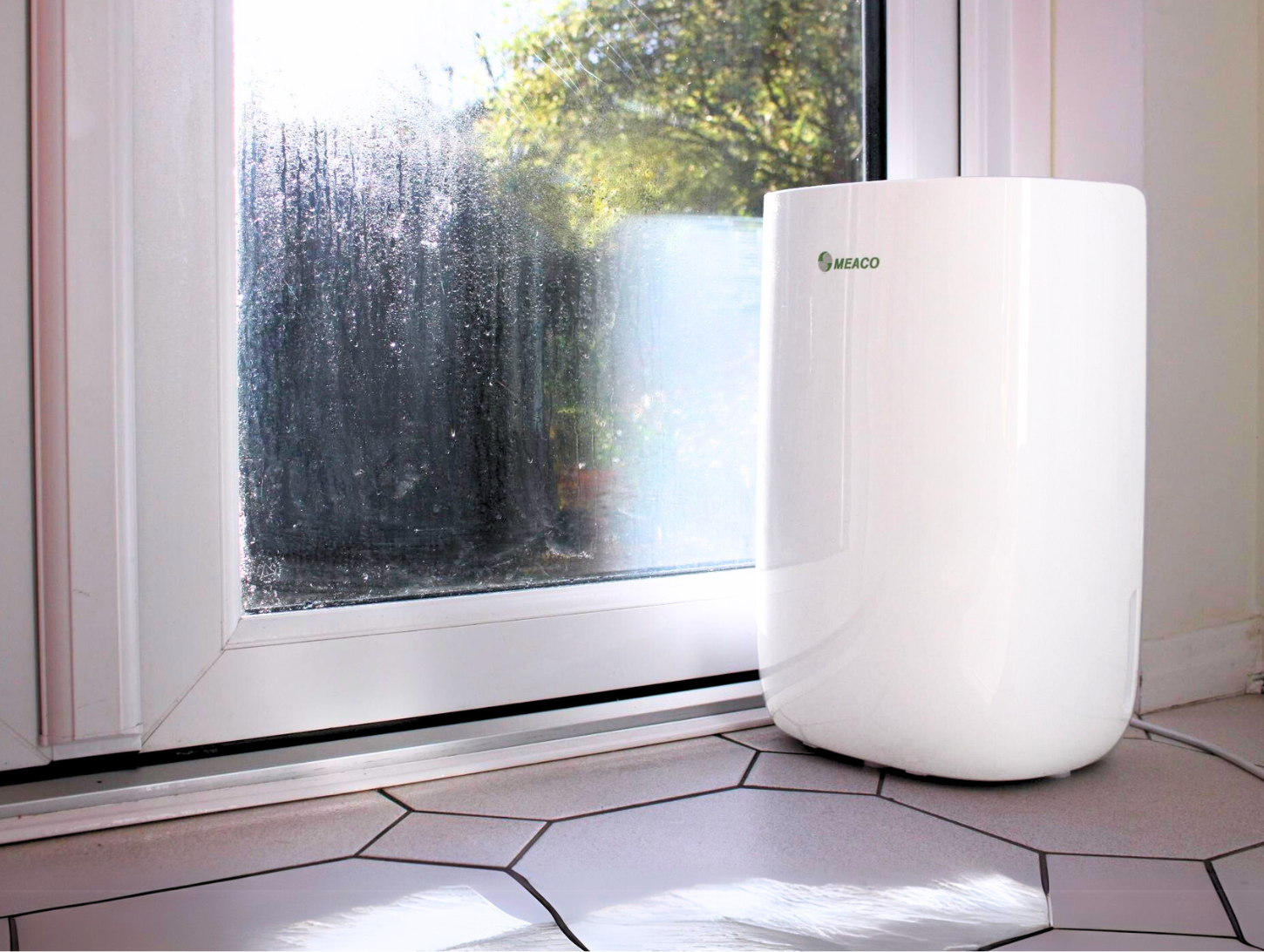
With the cold, there’s also condensation. When the temperature drops outside, generally below 5°C overnight, you’ll start seeing condensation on your windows. You may notice this most in the bedroom, kitchen, bathroom or conservatory, especially early in the morning. Stopping condensation is one of the biggest problems homeowners face.
So, how can you stop condensation? The two main approaches to ‘curing’ or ‘stopping’ condensation are either to open the windows or use a dehumidifier. Open the windows may give pretty instant results but we’re letting in the cold air and then paying to heat it back up. Dehumidifiers provide a fast, effective and cost-efficient way to manage condensation.
Opening windows to deal with condensation
You would probably expect me to recommend that you buy a dehumidifier. I am a dehumidifier manufacturer after all. But let’s look at the benefits of opening windows first.
In Germany, they call it “Stoßlüften”, meaning “shock ventilation” and they may have the right idea about things… When people worry about condensation or mould problems, the advice will often be to open the window. This is to improve ventilation.
However, in some older properties that are often quite ‘leaky’, we can see that condensation is rarely an issue. I mean that in properties with older windows, we don’t always see more condensation. These windows might let in some moisture and may not be fully draft-proof. However, condensation is about trapped moisture inside the house, not extra moisture coming in.
Opening windows can cure condensation – but do you want to let the cold in?
So why does ventilation help? Opening windows can stop condensation – but do you want to let the cold in?
First, what causes condensation on windows?
Essentially, condensation occurs when air meets a cold surface and forms water on that surface. And it’s all about the relationship between relative humidity and temperature. In most cases, the surface is the cold glass panes of your windows and the relative humidity is moisture within your home. It doesn’t matter how little moisture there is in the air – if the surface is cold enough, you will get condensation.
Your windows provide the perfect cold surface because they are in direct contact with the chilly outside. If you touch the window pane, you’ll feel the difference!
This is why my windows at home have been free of condensation for months. Now the temperature has dropped, I can suddenly see condensation. I doubt that the amount of moisture in the air in my home has increased. It is just that the surface temperature of the window is lower during a cold spell.
This is also why you’ll find double-glazed windows usually have less condensation than single-glazed ones. This is because the two panes form an insulated barrier. And as a result, the inside pane isn’t quite as cold and condensation is less likely to occur. Remember that double-glazing condensation can still happen, it’s just less frequent than single glazing. This does not mean your windows are broken but there are steps you can take to reduce it.
What is the science behind condensation: the relationship between humidity and temperature?
Condensation forming on cold surfaces happens because of the inverse relationship between temperature and relative humidity. As temperature falls, relative humidity increases and as temperatures increase, relative humidity falls. So if you heat air up, the relative humidity will decrease. This is the key to the reason why ventilation can help cure condensation.
So, there are two things helping to form condensation, the temperature of a cold surface (your windows) and relative humidity. Of these, which can we control in order to stop condensation?
Unless you have fancy heated windows, then the answer is relative humidity. You can do this in a few ways. Let’s start with opening the window.
Does opening the window stop condensation?
Ultimately, yes. You’ll quickly notice the condensation leaving the windows. The air in your home is full of moisture from cooking, bathing, showering, drying washing and even breathing. The air outside in winter will probably have a lower relative humidity. So when you open the windows, warm, damp air goes out and cold air comes in.
Condensation can build up easily on any cold surface, especially windows throughout winter.
But now your room is a lot colder and you don’t know whether the outside air has changed your room’s relative humidity.
Have we helped to reduce the condensation situation? The answer is still yes. If you’re having a hot shower and open the window a smidge, you can watch the condensation reduce dramatically.
It is also because we are not going to let the air stay cold. We will heat it up to a temperature that we are comfortable with.
Even if the air outside is freezing, I still want it to be about 20°C in my house but I’ve opened the window and let some of that cold air in. I will warm it up and I’ll turn the heating on.
And in the laws of science, increased temperature means decreased relative humidity. If we assume the incoming air is full of moisture, warming it up will reduce that relative humidity as well. Let’s say the incoming air has a relative humidity around 90%rh, increasing the temperature will reduce it down to something like 25%rh.
So, all is good! We have got rid of our warm damp air, replaced it with cold damp air and warmed it up. We now have warm dry air. There’s a cure for condensation.
Opening the windows will work and is an effective solution to condensation control.
But..
Think about what we have just done. We have heated the air, costing us money, and then we have thrown that heated air out of the window. It might have been easier to throw fivers into the street!
To replace it, we have introduced freezing cold air into our home and made ourselves feel very uncomfortable.
Now, we need to warm the cold air. This will help us feel comfortable again and lower the humidity. This costs more money in energy, and later in the day, we’ll have to do it all over again. In fact, ideally you will have to do this in every room in the house. You will certainly need to do it in the bathroom, kitchen and bedrooms at the very least.
Opening the windows does work but I am not a fan because of two reasons. One, it makes people feel uncomfortable. Secondly, there’s a huge hidden cost of reheating the fresh air coming in from outside. With energy bills skyrocketing it seems a real waste of money to keep on throwing the energy outside.
Is a dehumidifier a better way to stop or prevent condensation?
Yes, a dehumidifier is a superb way to manage relative humidity in your home and reduce condensation. Plus, a dehumidifier is the only way you’ll remove moisture. As we mentioned earlier: condensation occurs because of temperature and relative humidity. You are unlikely to control the temperature of your windows, but you can manage relative humidity with a dehumidifier. Making a dehumidifier an incredibly effective choice to prevent condensation.
Running a dehumidifier does of course have a cost to it. There is an initial price of the unit, and then there’s the electricity cost to run it.
But there is an important difference between the cost of running a dehumidifier and the cost of heating air.
MeacoDry ABC Dehumidifier extracting excess moisture and preventing condensation from occurring
- Some dehumidifiers create a little warmth while dehumidifying. Desiccant dehumidifiers create around 12°C which is ideal especially in garages and conservatories.
- If you’re opening the window and running the central heating, you’re potentially throwing hundreds of pounds away every year. The hot air often escapes through the window. You will just heat it up again later when you open another window.
- Finally, heating dry air is actually a lot cheaper than heating damp air. Read more: 7 Ways to Stay Warm, Save Money, and Delay Turning the Central Heating On
We use our dehumidifiers mainly in the winter when condensation is at its worst. It’s freezing outside which provides the perfect cold surface on your windows to condensate. And we are closing the windows and doors, trapping moisture in our home. This is the perfect recipe for condensation.
In the winter, it is cold and we need to heat our homes. The energy used by the dehumidifier is returned to the room that it is standing. And that energy is in the form of warmer air.
So the cost of running a dehumidifier is retained within your home. If you have a radiator within the same space as the dehumidifier, you can turn it off – helping to keep your energy bills down. So where is the cost of running the dehumidifier if you are benefiting from and enjoying the heat that it generates?
Read more: How much does it cost to run dehumidifier units? Less than you think!
How do deal with condensation in a conservatory
Condensation in conservatories is a hugely common problem for homeowners. It’s a room of windows, creating that perfect cold surface. It’s unheated so we’re not reducing the relative humidity by increasing temperature. And it’s just as likely as the rest of the house to contain moisture.
Both solutions work well for reducing condensation in these spaces: opening windows and running a dehumidifier. But if you want to proactively prevent condensation in a conservatory? My best recommendation is to manage your relative humidity with a desiccant dehumidifier.
Read more: How do I prevent condensation in a conservatory?
A dehumidifier is a fast, effective and cost-efficient way to stop condensation. Opening the windows may seem to be the easy – and free – solution, but it’s not quite as cheap as it looks!
We recommend…
- Compact and stylish dehumidifier
- Quiet Mark – from just 36dB
- Eliminates moisture – ideal for damp, mould and condensation
- Shop now
Meaco Low Energy Dehumidifiers
- Low cost to run – 4p / hour based on 24.50p / kWh
- Quiet Mark Award – up to 41 dB
- Tackles damp, mould and condensation
- Shop now
Meaco DD8L Desiccant Dehumidifier
- Superb at removing condensation from windows
- Desiccant dehumidifier
- Provides additional warmth & offers high performance
- Shop now
Browse all dehumidifiers.

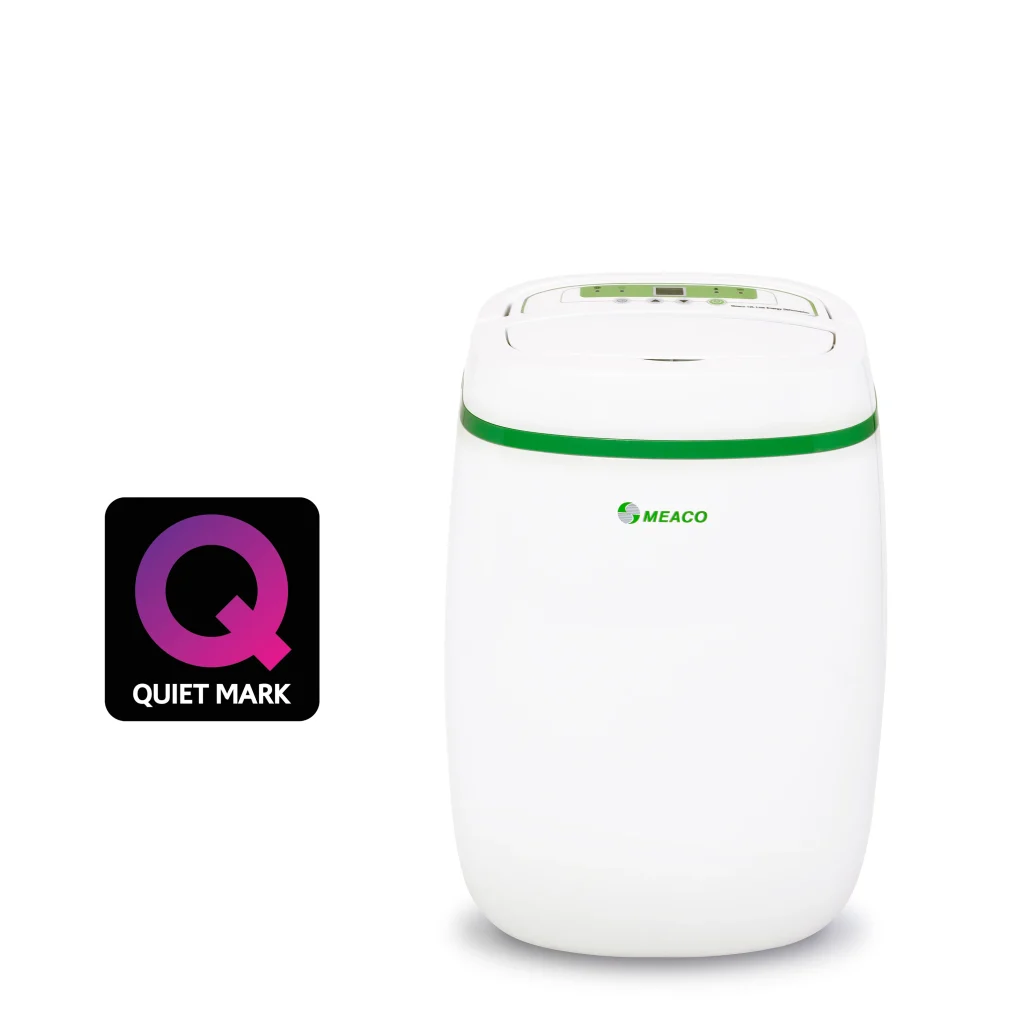
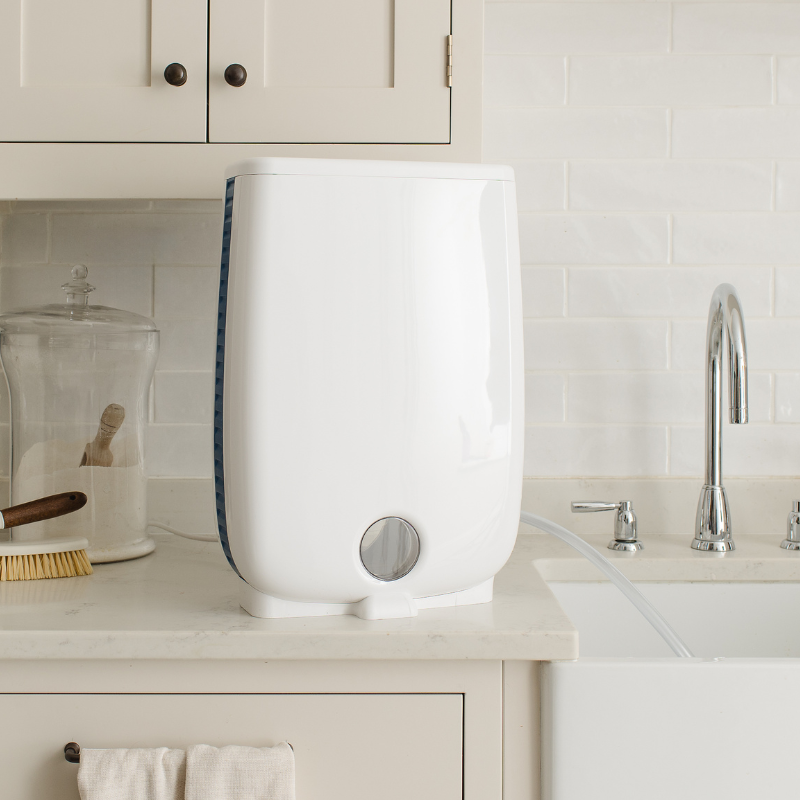





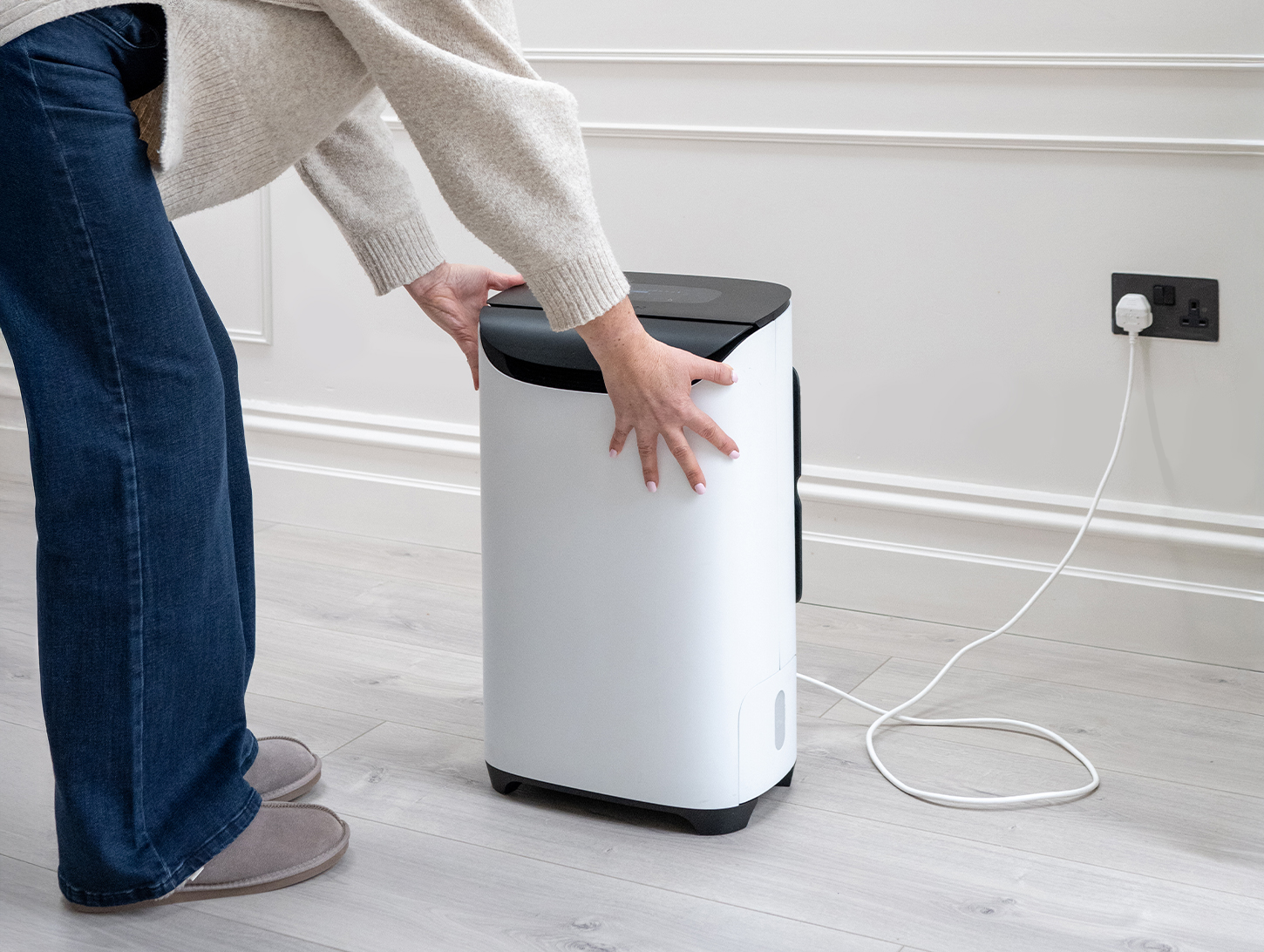
215 responses
Hi Chris,
We just moved into a new 3 bed home 2 years ago and have started to notice mold on the ceilings in the bedrooms and on the clothes. Yes my wife does dry clothes in the house which is one cause and not opening the windows enough which we do regularly now. What i really want to know is if we purchase the 25l meaco, do we close all window trickle vents and wall vents in all rooms upstairs and down while the unit is in use – say it’s on 24/7 then opening the windows or vents is not required.
Thanks
Michael,
You should always keep the vents open and never close them. Having them open and using the dehumidifier is all part of good air management and they compliment each other.
Chris
Hi. Chris
We have a 3bed semi and the bedrooms all seem to get mould and condensation around the windows.
I have my eye on a Blyss moisture absorber, could this work and where should I place? Perhaps by the window?
Ollie,
It will be too small and will not solve the problems. You need a proper dehumidifier like the MeacoDry ABC 12L.
Chris
Looking at a dehumidifier for my sons 2 bed ground floor flat. Its a modern well maintained block of flats but his flat seems to have a slight damp issue though not easily apparent if no ones living there. We have lent him our desiccant dehumidifier to help in the meantime. Its collecting approx 3 – 3.5 litres in a day but no one living there at the moment though the heating is on. My question is which dehumidifier would be best for him? Looking for it to be quiet, and also dry a little bit of laundry. He is running our desiccant dehumidifier on high setting 24 hours a day. Thank you
Anne,
Thank you for your message and your purchase. Definetely go for the MeacoDry ABC 10L as noise is the number one factor as you have suggested. The machine will be big enough to cope and it is the quietest.
Chris
I bought a Meaco ABC as I live in a large lodge/ static caravan, and it seems to be doing its job collecting water. I have hanging dehumidifiers in problem places like the wardrobe but they are still collecting water? Should I still keep these in place or will the Meaco sort this issue out? I have run the Meaco till it’s at 50% in these areas, but is there something else I should be doing?
Audrey,
Thank you for your purchase. If the wardrobe doors are open then the dehumidifier will be effecting the wardrobes and will then turn off when the humidity is reached. The chemical dehumidifiers have no such control mechanism and will just continue to operate. this might not be a bad think because a static caravan/lodge will have less insulation and therefore the humidity will increase when it hits cold spots on outside walls and if the wardrobes are on outside walls then the chemical dehumidifiers will still be useful. They will also be able to protect your clothes when the wardrobe doors are closed.
Chris
Dear Chirs,
Many thanks for your article. I have recently purchased a 25L dehumidifier for my home to help control water vapour. You make a fair point regarding the energy efficiency of running dehumidifiers as opposed to heating cooler (hence drier) air to recue relative humidity. However since dehumidifiers can’t tackle other indoor pollutants e.g CO2, VOCs as well as viruses (including it seems COVID), I find opening windows for air exchange to be worth the cost.
Using this dual approach of a dehumidifier + ventilation through opening windows, when would you recommend doing each? I.e I tend to run the de-humidifier overnight in the kitchen/basement area (with house windows closed) and open windows in the morning once I wake up and the central heating starts. Is it a waste to be running the dehumidifier if there is ventilation from windows at the same time (assuming outdoor temp is 10C and indoor is 21C for example)?
thanks
I understand your logic and have no problem with the concept at all. If you are just leaving the windows open for an hour or so then i would let the dehumidifier run as there is probably a greater risk of forgetting to turn the dehumidifier back on than the issue of increased work load for the dehumidifier.
Opening windows with the temperatures you describe will have little effect on the dehumidifier because it is actually a form of dehumidification itself and the only extra cost to yourself is in heating.
Chris
Hi Chris I had a leak from our toilet cistern which we discovered had creeped under the floorboards in our first floor bathroom. I have lifted one of the floorboards to dry out with windows open and fans running (plus trays of cat litter). The humidity level has gone from 99% to 64% under the floorboards over the last 5 days and the actual level in the bathroom is approximately 54%. What level humidity do you think it should be under the floorboards before we seal it back up again. Should I be looking at between 30% – 50%?
Sue,
Sounds like you are doing a good job there. I would go for less than 40%rh for a few days before ceiling things up.
Chris
I have recently discovered in my basement condensation developing only under my couches on top of a vinyl floor that was installed over concrete any advice ?
Jay,
Get a dehumidifier in there, the Meaco 20L Low Energy would be an excellent choice for a basement. Make sure as well that the sofa is not touching an outside wall.
Chris
Hi Chris., I’ve been in this house for 2 years and cannot get landlord to fix stuff but I have mold all on my windows and my house is cold and damp my linens toiletries everything’s wet., so discomforting and making me sick., wanted to ask if I should open windows even when there’s mold on them., and I have a good Noma dehumidifier but the bucket fills with water everyday and it gets moldy often try to clean it often but this is getting to be to much.?
Sue,
Sorry to hear of your problems. If the outside air temperature is colder than inside the house then opening the windows will help a lot. This is particularly important in the kitchen and bathroom to get rid of excess moisture.
I would suggest cleaning the mould off with a cleaner which you can buy from a DIY store.
I hope that things improve for you soon.
Chris
Hi got damp spreading on my ceilings in my bungalow … my bedroom is always cold . I have condensation on my windows turning my nets black . My hubby keeps all window air things open .has door open while cooking . Don’t no which humidifier to buy … I have a 2 bedroom bungalow and 1 bathroom 1 kitchen and hall way .. I need to dry my clothes instead of using a dryer to expensive … also I have ashma and its affecting Me . Were abouts do I put my humidifier as damp. n bedroom as said front room ceiling and we’re can I dry clothes so they don’t smell of damp .. do I need to buy 2 humidifier, s or 1 …. thank you for read reading my concerns… have an illness that the weather effects my pain levels .
Karen,
Thank you for your message, sorry to hear about your issues and your problems. Get a 20L dehumidifier, either Arete or Low Energy and make a start ASAP. Use the dehumidifier to dry the washing and place the dehumidifier somewhere central in the bungalow with the internal doors open so that the dehumidifier can dry the whole house. You only need one machine.
Chris
Hi Chris,
Very useful article, thanks.
I have recently moved into a detached bunglow. I had a wardrobe attached to an external wall. Unfortunately, because of the condensation, it had black spots and mould behind the wardrobe (on the external wall). I manged to clean it up somehow.
I have decided to buy a meaco 25L dehumidifier to fix the condensation issue. I have couple of questions:
1) Should I keep my windows open while running the dehumidifier? Will it help?
2) I have been advised to leave at least 6 inch gap between the external wall and wardrobe to prevent condensation. I think 6 inch is really a big gap and it will not look nice. Can the gap be reduced if I buy a dehumidifier?
Thanks.
Thank you for the purchase. Look at this as a job in stages. Dry the house as a whole out, make sure that you think about where the moisture is coming from and deal with it. Then dry the wardrobe out by running the dehumidifier in front of the wardrobe blowing the dry air into the wardrobe with the louvre on.
Having an air gap is a good idea, if you leave the wardrobe door open during the day when you are out then it will let the air circulate and you can probably have a smaller gap.
Keep the dehumidifier running in the home 24/7, Auto mode on the 25L is brilliant for that, make sure that all the internal doors are open so that the damp air can move towards the wardrobe.
Only have the windows open if the outside air is a lot colder than indoors.
Hope this helps.
Chris
Hi,
My husband and I just purchased a house in Vermont. We notice a ton of condensation in the upstairs bedroom, on the windows. The windows downstairs have some condensation but nearly as bad as upstairs. We have a dehumidifier and were hoping this might help. My question is where should I place it? Our second story is a loft with a bedroom and a bathroom, can I just place it in the bedroom? Or is there a better spot to put it? Thanks so much for your help with this!
Doria
Doria,
Place it on the landing and leave the bedroom and bathroom doors open to allow the air to circulate.
Chris
My small upstairs bedroom skirting boards are rotten on the front and Gable end walls. I have taken the boards off and the plaster has crumbled behind boards but not above the boards. The brickwork is now exposed and is slightly damp. If I used a dehumidifier would this help dry wall before replastering and replace skirting boards.
Yes it will. Keep the doors and windows closed, and if you have one, point a fan at the damp air to speed up the moisture movement.